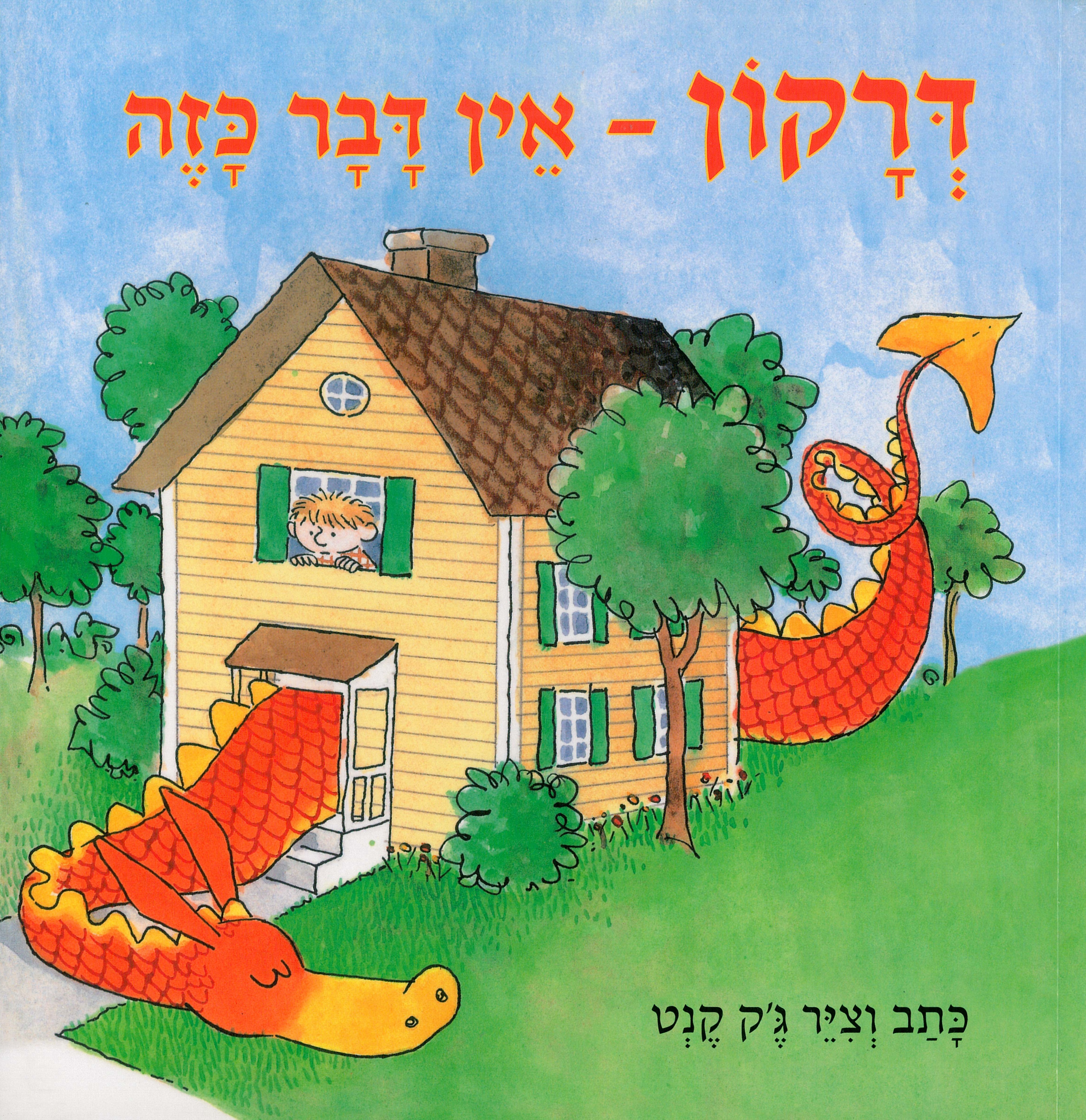דרקון - אין דבר כזה
מאת: ג'ק קנט
תרגום לרוסית של ההצעות להורים המודפסות בדפים האחרונים של הספר
Драконов не бывает
Джек Кент
Дорогие родители,
Однажды утром Билли обнаружил в своей комнате дракончика. Он с волнением зовет маму, но мама считает, что это неподходящее время для выдумок. Дракончик растет и начинает вредить Билли: он съедает его оладушки, не дает ему пройти, и Билли особенно беспокоится, когда он весь дом водружает себе на спину, а мама продолжает не замечать его. Так есть ли действительно дракон в доме Билли или это правда, что драконов не бывает?
"Тревога на сердце человека"
У всех бывают причины для беспокойства. Иногда мы их скрываем и ждем, когда они пройдут, иногда хотим кому-нибудь рассказать, но не всегда нас готовы выслушать. Иногда, когда нас не хотят выслушать, беспокойство усиливается и усиливается, так, что мы уже не можем избавиться от него.
В Книге Притч говорится: "Тревога на сердце человека – пусть подавит ее, а доброе слово веселит его" (Мишлей 12,25) Два мудреца пытались понять, о чем здесь говорится. Рав Ами сказал: когда человек обеспокоен – займись чем-нибудь другим и отвлекись от забот. Рав Аси думает совсем по-другому: когда человек обеспокоен, он должен говорить о своей проблеме с другими и так сможет преодолеть свое беспокойство.(Вавилонский Талмуд, Санхедрин 100,2) А как вы думаете? Способ справиться с тревогой – это отвлечься от нее, так как ведет себя мама? Или, может быть, поговорить о ней, так, как хотел бы Билли, раньше, чем она вырастет до невероятных ("драконьих") размеров?
Занятия в кругу семьи
Джек Кент написал и проиллюстрировал рассказ. Если вы обратили внимание, то увидели, что иллюстрации не всегда соответствуют словам в рассказе. Читая слова "драконов не бывает" предложите детям проверить, действительно ли их нет и в иллюстрациях тоже. Можно побеседовать с детьми о том, что лучше описывает действительность в рассказе: слова или иллюстрации.
Иллюстрации в рассказе обогащают словесную линию сюжета. Рассмотрите картинки вместе с детьми и определите, что дракон делает на каждой из них.
Билли видит то, что его родители не видят. Можно ли видеть то, что не видит никто другой? Можно поиграть в "догадки" и "напрямки" (помните, как играли Митя и Никита из рассказа Алексея Толстого?): каждый по очереди рисует что-нибудь абстрактное, а другие участники стараются определить, что нарисовано, дорисовать и докрасить недостающее.
Это возможность побеседовать с детьми о чувствах героев рассказа. Можно вместе подумать: почему мама не отнеслась серьезно к словам Билли? Что, по вашему мнению, чувствовал Билли, когда мама не поверила ему? Можно перевести беседу на
реальные факты, знакомые вашим детям: случалось ли, что им тоже не верили?
Можно сделать с детьми дракона или какое-нибудь другое страшилище. Дракон Билли больше всего любит кушать и спать, он успокаивается, когда его гладят. А что любит ваше страшилище?
Как можно преодолеть страх перед драконами? Во многих сказках герои борются с драконами и побеждают их. Знаете ли вы какие-нибудь другие рассказы или сказки о драконах? Можно рассказать их детям по следам этой книжки.
Беспокойство в сердце человека – так отвлечься от него или обсуждать его? Как вы обычно справляетесь с тем, что вас беспокоит? Можно рассказать детям о каком-то случае из вашего детства, когда вы чего-то боялись, и о том, что помогло вам справиться с этим страхом.





